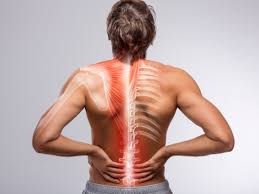Muscle pain can be a common and frustrating experience, whether it’s caused by overexertion, injury, or a chronic condition. While it’s natural to want quick relief, understanding how to manage muscle pain effectively can help you recover faster and prevent future discomfort. In this blog, we’ll explore essential tips and treatments to help you manage muscle pain and get back to feeling your best.
1. Understand the Cause of Your Muscle Pain
Before you can effectively manage muscle pain, it’s important to understand its cause. Muscle pain can be categorized into two main types:
- Acute Muscle Pain: Often caused by overexertion, intense physical activity, or a sudden injury, this pain usually lasts for a few days.
- Chronic Muscle Pain: This type of pain persists over time, often associated with conditions like fibromyalgia, arthritis, or myofascial pain syndrome.
Recognizing the difference will help you choose the appropriate treatment approach.
2. Rest and Recovery: Give Your Muscles Time to Heal
One of the most important aspects of muscle pain management is allowing your muscles to rest and recover. Overworking the affected muscles can exacerbate pain and slow down healing. Here are some tips for effective rest:
- Avoid further strain: Reduce physical activity that may aggravate the pain.
- Sleep well: Sleep is essential for muscle recovery, so ensure you get plenty of rest.
- Elevate the injured area: If possible, elevate the affected limb to reduce swelling.
3. Apply Heat or Cold Therapy
Both heat and cold therapies are proven methods for managing muscle pain. They help reduce inflammation, alleviate muscle spasms, and promote healing.
- Cold Therapy (Ice): Apply an ice pack to the affected area for 15-20 minutes to reduce inflammation and numb the pain. Cold therapy is especially helpful within the first 48 hours of an injury.
- Heat Therapy (Heat Pack or Warm Bath): Use heat to relax tense muscles and improve blood circulation. Heat is ideal for chronic pain or stiffness.
4. Take Over-the-Counter Pain Relievers
Over-the-counter (OTC) medications can help manage mild to moderate muscle pain. The two most common types are:
- NSAIDs (Ibuprofen, Naproxen): These medications reduce both pain and inflammation, making them ideal for muscle injuries and strains.
- Acetaminophen (Tylenol): A good option for mild pain, acetaminophen works by blocking pain signals in the brain but does not reduce inflammation.
Always follow the dosage instructions and avoid taking OTC medications for prolonged periods without consulting a doctor.
5. Use Topical Pain Relievers
Topical pain relievers are an excellent option for localized muscle pain. These treatments can be applied directly to the affected area, providing targeted relief without systemic side effects.
- Menthol-Based Creams: Products like Biofreeze offer a cooling sensation that soothes muscle pain and improves blood flow.
- Capsaicin Creams: Derived from chili peppers, capsaicin temporarily reduces pain by desensitizing pain receptors in the skin.
- Lidocaine Patches: Lidocaine blocks nerve signals to the brain, offering localized numbing relief for muscle pain.
6. Try Muscle Relaxants
For severe muscle pain or spasms, your doctor may recommend muscle relaxants. Medications like Pain O Soma (Carisoprodol) and Cyclobenzaprine (Flexeril) can help relax tense muscles and provide relief from painful muscle contractions.
- When to use: These medications are typically prescribed for short-term use to address acute muscle pain or spasms.
- How they work: Muscle relaxants work by affecting the central nervous system, reducing muscle tension and discomfort.
Always use muscle relaxants under the guidance of a healthcare provider, as they may cause drowsiness or have potential side effects.
7. Stretching and Gentle Exercise
Although rest is important, gentle stretching and light exercise can help speed up recovery by improving muscle flexibility and circulation. Incorporate these practices into your routine:
- Gentle Stretching: Focus on slow, controlled stretches to lengthen tight muscles and improve flexibility. Avoid overstretching, as this can aggravate pain.
- Low-Impact Exercise: Activities like walking, swimming, or cycling are great for promoting circulation without placing too much stress on the muscles.
Regular movement also helps prevent muscle stiffness and tightness, reducing the risk of future pain.
8. Massage Therapy
Massage therapy is an effective treatment for muscle pain, particularly for relieving muscle knots, tightness, and soreness. A licensed massage therapist can target specific muscle groups to release tension and improve circulation.
- Self-Massage: Using a foam roller or massage stick at home can also help relieve tight muscles and prevent pain from returning.
9. Stay Hydrated and Maintain a Healthy Diet
Dehydration and poor nutrition can worsen muscle pain, so maintaining proper hydration and a balanced diet is essential. Here’s what you can do:
- Drink water: Dehydration can lead to muscle cramps and spasms. Drink plenty of water throughout the day to keep your muscles hydrated.
- Eat nutrient-rich foods: Ensure your diet includes foods rich in magnesium, potassium, and calcium, as these minerals are vital for muscle function and relaxation.
10. Consult a Healthcare Provider
If your muscle pain persists or worsens despite trying the above methods, it’s essential to consult a healthcare provider. They can help determine the underlying cause of your pain and recommend more advanced treatments, such as physical therapy, injections, or prescription medications.
Conclusion
Managing muscle pain effectively involves a combination of rest, proper medication, therapies, and lifestyle changes. By following these tips, you can relieve discomfort and accelerate your recovery. If your pain doesn’t improve with at-home treatments, don’t hesitate to reach out to a healthcare provider for further evaluation and care.






